Jauja has the rare (for much part of the world) pedestrian street extending from its plaza. On the eve of All Saints Day, 10/31, the whole street was jammed with trick-or-treat US-style. Every child was in costume, made in China, priced ~$10. The next day we walked around the flower markets and out to the cemetery. The mountains of flowers are amazing, even having just come from the alfombras. We also made a mid-day excursion to Muquillanqui where there was dancing and horseback riding by laguna El Tragadero.
Peru appears to be very different to us this trip. Of course the country has developed, and so have we. Judging by the level of economic activities, Peru is in an upward trend. People seem happy which makes us more relaxed. We are enjoying ourselves very much.
Another scenic bus ride from Tarma to Jauja.

The bus dropped us off about 1km to the east of the Plaza and we first had to wait out a rain shower before walking into town. Jauja seemed kinda sleepy as we headed down the 3 block pedestrian-only street to our hotel. Returning to the Plaza after checking-in, we found the Turismo Office closed and not a lot of activity even though a band was playing on a small stage.


We didn't even look for a vegetarian restaurant - our online research had turned up nothing - and found some deep-fried street food and a night market stir-fry instead.



Satisfied, we returned to the pedestrian street to find a US-style Halloween party going on. Wow! This shot is looking to the Plaza.
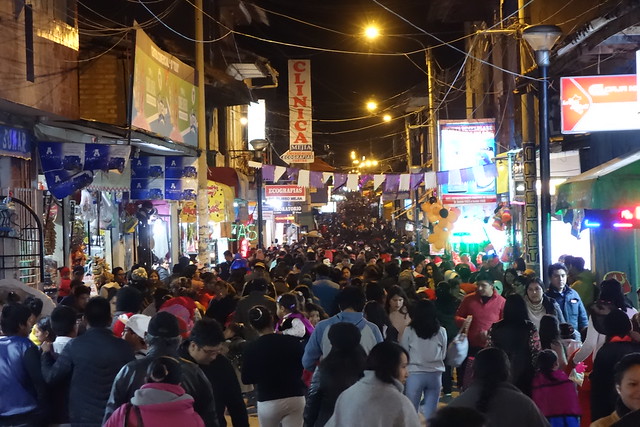
Spiderman seemed to be fav costume for boys along with Dracula as kids trick-or-treated their way down the street, stopping at shops for treats. Many parents were buying costumes and plastic pumpkin candy buckets on the spot.


Young and old were celebrating.

Costume shop.

The next morning we did a brief walking tour of central Jauja using a map we found at the closed Turismo Kiosk in the Plaza. All over the world in developing countries, when you see a stack of firewood in the middle of the city you're bound to be
near a bakery ie panaderia in Peru.

Colonial buildings.

Small plaza.

It's getting busy near the Iglesia from which there is a direct road to the cemetery.

One large ready-to-eat-today palta/avocado costs 2 soles, about 60 cents.

This flower market is busy. Families will put fresh flowers on their ancestor's graves today (and tomorrow).

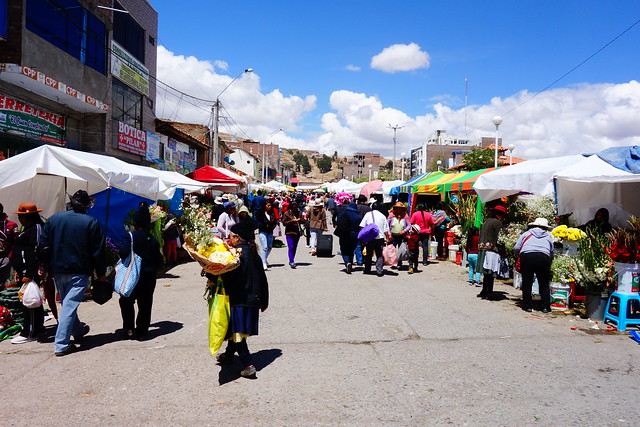

This Arco leads to the cementario.

Pachamanca, pit roasted food, just outside the gates of the gates.
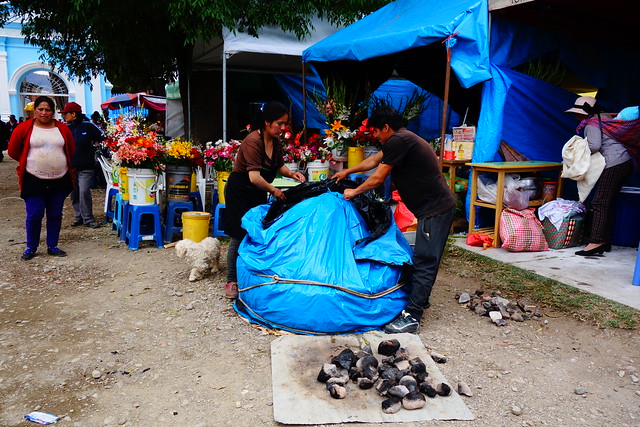

Just inside the cemetery is a memorial to immigrants who died in Jauja.

Families are cleaning, and sometimes whitewashing graves, and always leaving fresh lowers, and often staying to picnic or party with the deceased.




No alcohol is allowed in the cemetery, but it's OK just outside at the many temporary restaurants and pachamanca, now ready, places.
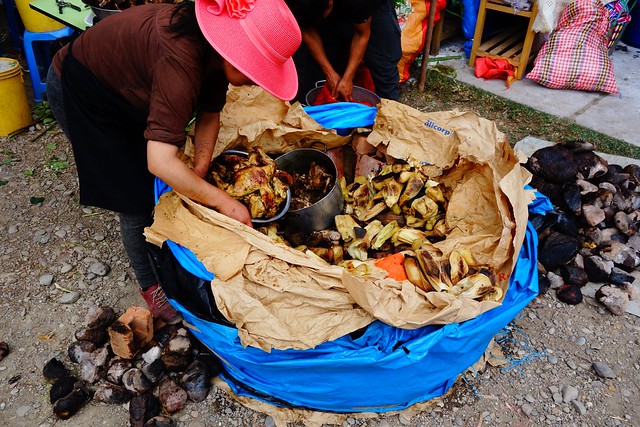
And woo-hoo by chance we find a vegetarian restaurant, Restaurante Vegetariano Salud y Vida at JR. COLINA 593, and stop in for lunch on our way to the transportation terminal.

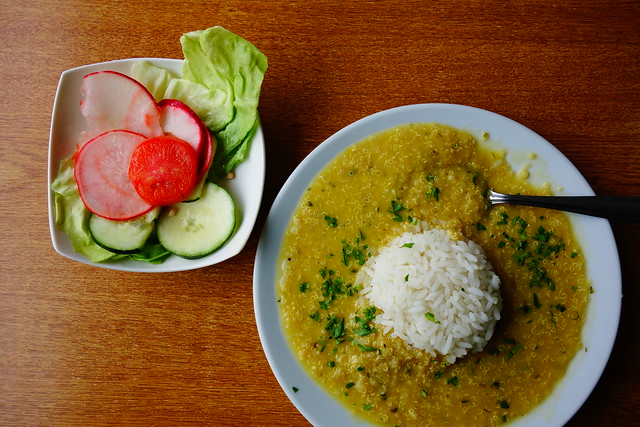

After lunch we catch transport from the transport terminal by old train station - the train does not currently operate - to Muquillanqui, about 10 kms west of town, where there is music + dancing in the small plaza and an equestrian event down by laguna El Tragadero.



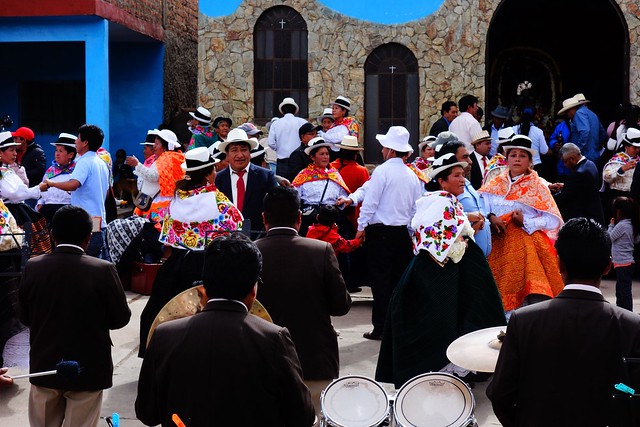
Music + dancing video.


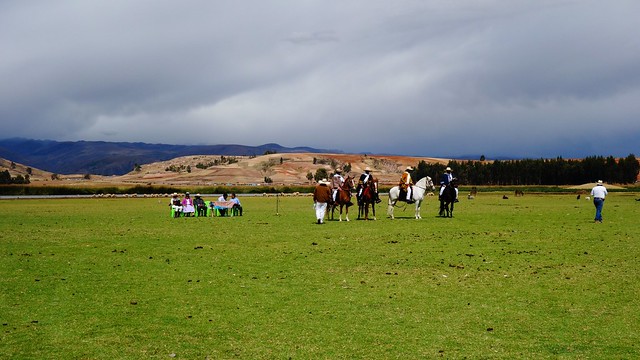

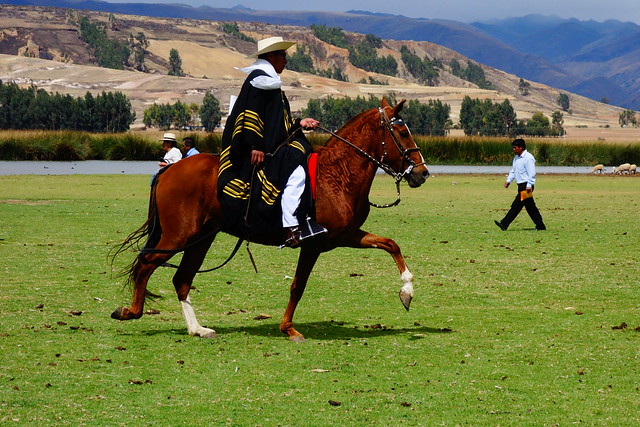

Equestrian event video.

View from our hotel room.

We buy some bread at the market. The breads in the front with added candies are special breads for All Saints Day and are called wawa (bread babies).

We walk back to the cemetery where the party is still going - lots of flowers.



Back at the night market we have some very tasty fried potatoes with a variety of homemade mayonnaise to choose from. My fav was the black olive mayonnaise with a purple color, SL's fav was the spicy huancaína, the yellow one with red flecks, next to the olive.


No comments:
Post a Comment